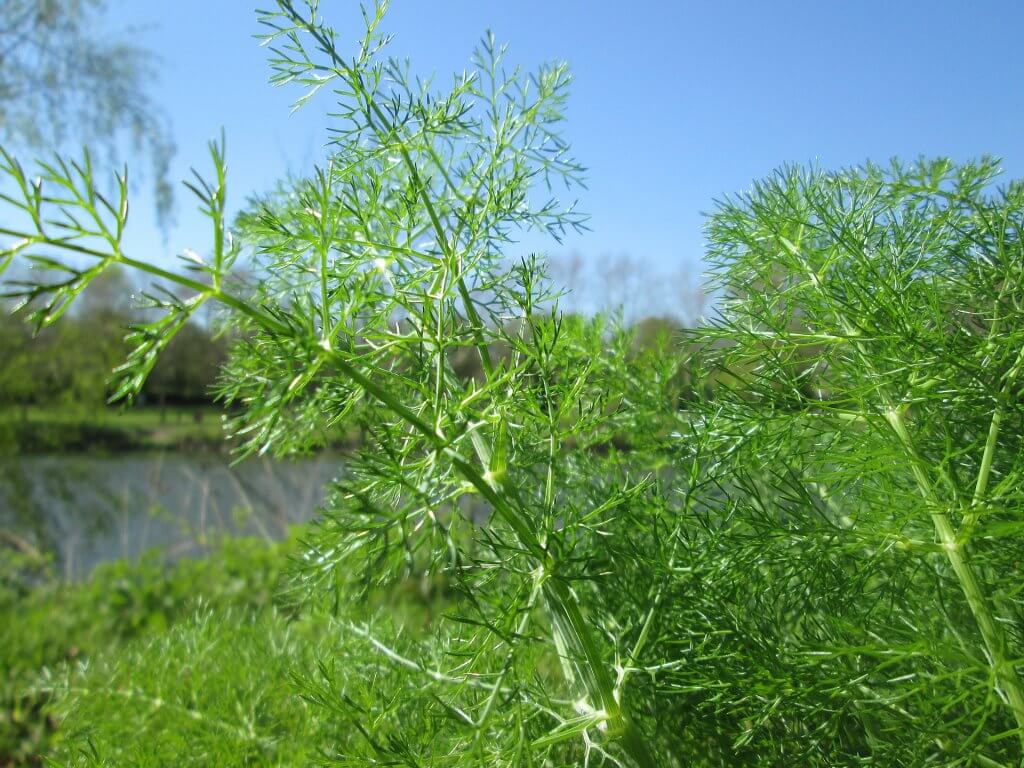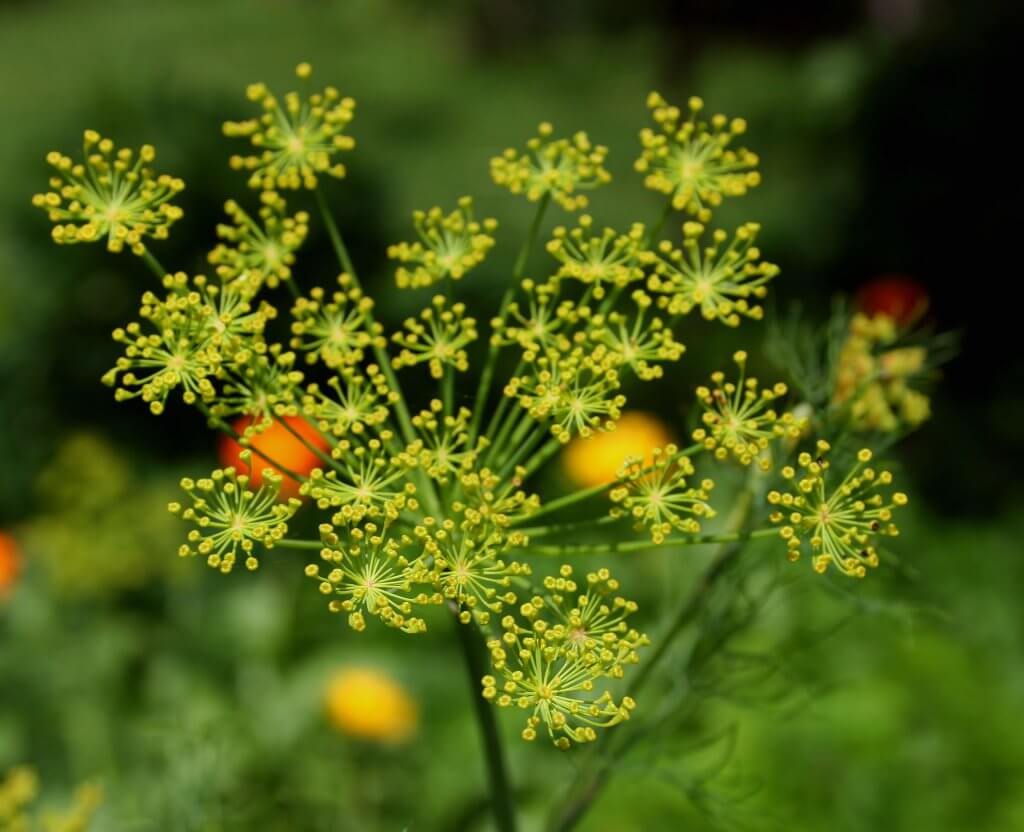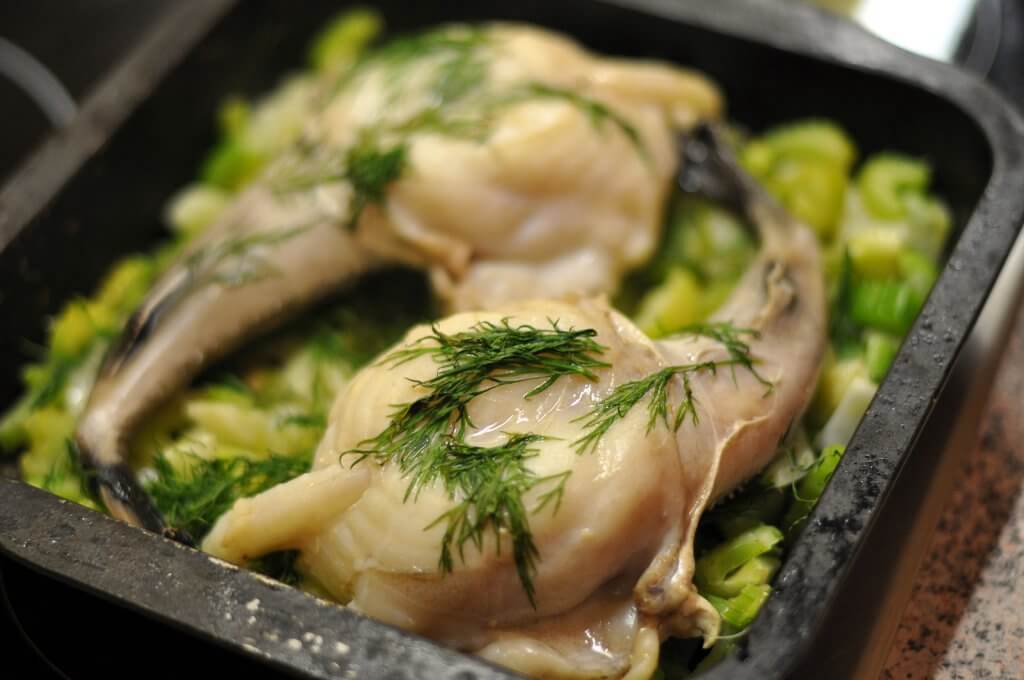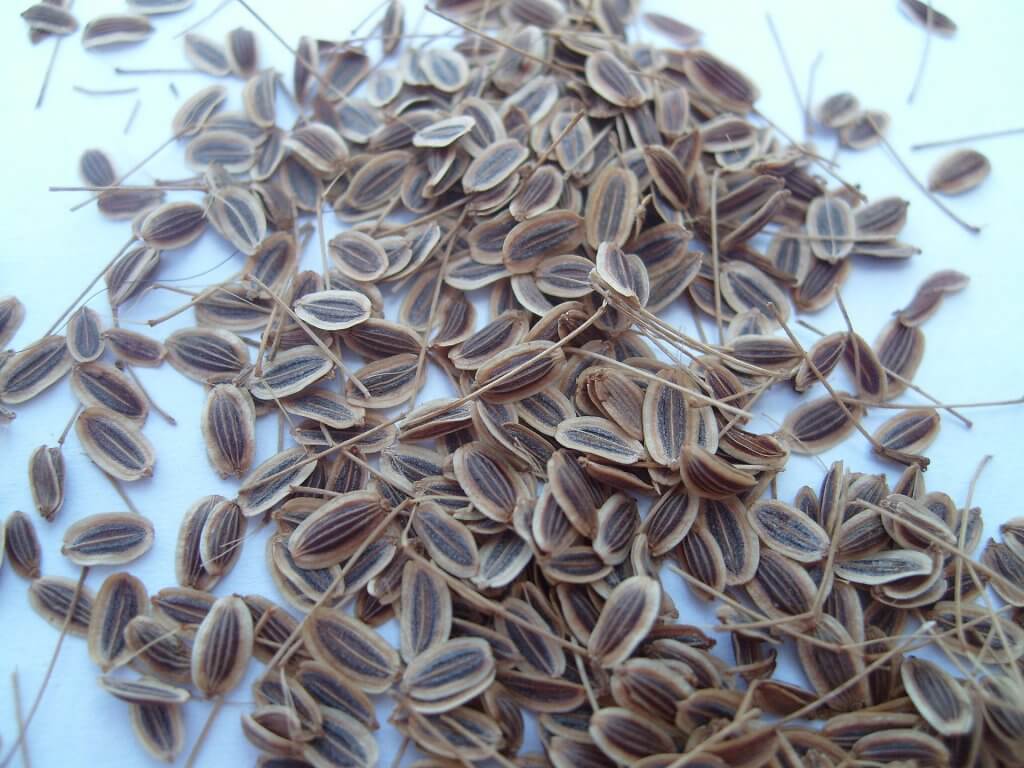Dill (Anethum graveolens) is a popular herb used worldwide for its delicate hints of lemon, anise and celery like flavoring. It is cultivated throughout Europe and parts of Asia to be used within a wide range of dishes and condiments. It is an annual herb that is actually part of the celery family. You will find it growing wild in amongst cornfields in Spain and Portugal and occasionally along the coast of Italy.
When growing dill it will typically reach a height of roughly 50cm. It has thin, delicate leaves (approximately 1.5mm) that line the slender, hollow stems. When flowering, you will see white or yellow flower heads that form loose and delicate clusters.
The leaves and seeds (fruits) of dill are used widely for their flavoring in culinary dishes and also for their medicinal value.

Cultivation and History of Dill
Growing dill is best in warmer climates. It prefers an area that receives full sun, as even partial shade can greatly reduce its growth. The soil must be well drained and high in nutrients.
After producing seeds, the plant will usually die back. This can happen more quickly in particularly hot weather, where the plant will ‘bolt’.
To harvest the seeds, cut the flower heads from the stems just as the seeds begin to ripen. Place the flower heads upside down within a paper bag. As the plant dries the seeds will begin to loosen and fall into the bag.

Toxicity
Dill is safe to consume within food. If using dill as a herbal remedy however there are some precautions to consider. The juice from dill may increase your risk of sunburn if applied to the skin as it contains photosensitive chemicals. If you are pregnant or breast feeding, it is best to avoid using dill as a herbal remedy. This is because it may help in starting menstruation, which could inadvertently cause a miscarriage.
Dill may lower your blood sugar, so care must be taken if you have diabetes. If taking dill within a herbal remedy you must monitor your blood sugar levels as a precaution.
As a member of the carrot family, some people may find themselves allergic to dill if they also have carrot, celery or coriander allergies.
Uses
Culinary uses of Dill
Soups, sauces and fish dishes often use dill within recipes. One of the most popular uses for dill is with pickling cucumbers. A practice very popular within Germany. Within French cuisine it is often used to flavor cakes, pastries and seafood. It also makes a unique and attractive garnish. Dill is quite a delicate herb, so it is best to add it at the last moment to your recipes and dishes. As the flavor can quickly disappear. The seeds are used as a spice to add a mild spiced and earthy flavor to dishes. The leaves, commonly called dill weed, are used as a herb.

Medicinal uses of Dill
Dill was used for a number of remedies and medicines throughout Europe and parts of Asia. The seeds were once used as a digestive aid and also as a remedy for stomach complaints. Even today many herbalists call upon dill to help with minor illnesses like coughs and colds. Research has shown that substances within dill may have anti bacterial properties. The leaves can be boiled and infused within water and then drank, to help with easing pains and inflammations.

Did you know…
Oil is extracted from dill to be used in the production of cosmetics and soap products. It is believed to contain substances which can reduce the appearance of wrinkles, although research is limited.
Conclusion
Dill can attract a number of pollinators into a garden, which makes it a perfect companion plant. Plant it next to cucumber and broccoli to help with increasing their yield. Butterflies are also highly attracted to the flowers of dill, so you may often see them within butterfly gardens. The soft feathered leaves make the plant very attractive and a great addition to any herb garden.
—————Written by Hannah Sweet
Hannah is a freelance writer and graphic designer from the UK. With a penchant for travelling, photography and all things botanical, she enjoys writing about a wealth of topics and issues, from conservation and slow living, to design and travel. Learn more about her writing and design services at www.sweetmeanders.co
Many of our readers find that subscribing to Eat The Planet is the best way to make sure they don't miss any of our valuable information about wild edibles.
See our privacy policy for more information about ads on this site






